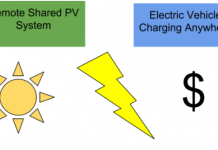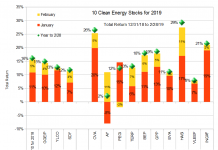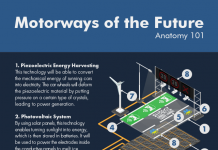Tom Konrad CFA
Pike Research just released a report on the Total Cost of Ownership of Alternative Fuel Vehicles for Fleet Operators. The report compares the purchase price plus lifetime fuel cost of mid-sized cars available in the US.
 Although the authors hesitate to declare any alternative fuel the cheapest option, the chart below clearly shows that the “BEV-100″ (Battery-Electric with 100-mile range, a.k.a. the Nissan Leaf) to be the least expensive option even at high electricity prices ($0.14/kwh) and low gas prices ($3/gallon.) However, the Leaf only has a clear lead when the $7500 tax credit is taken into account.
Although the authors hesitate to declare any alternative fuel the cheapest option, the chart below clearly shows that the “BEV-100″ (Battery-Electric with 100-mile range, a.k.a. the Nissan Leaf) to be the least expensive option even at high electricity prices ($0.14/kwh) and low gas prices ($3/gallon.) However, the Leaf only has a clear lead when the $7500 tax credit is taken into account.
 The other vehicles in the chart are (from left to right):
The other vehicles in the chart are (from left to right):
- A conventional car with a 4 cylinder, 2.4 liter engine
- A flex-fuel vehicle (FFV) with a 4 cylinder, 2.4 liter engine
- A car with a four cylinder diesel engine.
- The diesel car running on Biodiesel.
- A conventional car (same engine) with start-stop technology which turns off the engine when the car is stopped.
- A mid-sized hybrid-electric vehicle with a 2.4 liter engine.
Also compared in the report (but not shown in the chart) were natural gas (CNG), plug-in hybrid (PHEV) vehicles, and also vehicles of various sizes. The following chart shows the total cost of ownership of these at today’s fuel prices.

So Cost-Conscious Fleet Managers Should Buy the Leaf?
Even with the tax credit, there are a few caveats.
- This analysis does not account for the time value of money. A cost-conscious fleet manager would be discounting future fuel costs at his company’s cost of funds. For the US government, that may be only a couple percent, given what Treasury bonds are selling for these days. But most public companies cannot borrow at nearly so low a rate, and raise a good portion of their funds through more-expensive equity, so a discount rate in the 5% to 15% range would be more appropriate. This will make fuel costs relatively less significant, and disadvantage BEVs and PHEVs relative to other vehicles.
- No account is taken of the need for additional fueling infrastructure. This gives an advantage to BEVs, PHEV-40s, and natural gas vehicles relative to the rest. PHEV-10s (i.e. the plug-in Prius) have small enough batteries that they should be able to get by with inexpensive level 1 (120 V) charging. A decent extension cord would do the trick.
- No account is taken for differences in maintenance costs, which are lower for pure electric vehicles, and may be somewhat lower for PHEVs as well, when they are run primarily on electric power.
- Flex-fuel and Start-stop technology are currently only available on higher-end vehicles, which makes these inexpensive technologies seem much more expensive than they really are. Fleet operators wishing to use such higher end vehicles already may find them to be more attractive options than they look like in this comparison.
Conclusion: Get the Prius

After I make back-of-the envelope adjustments to the report’s results for maintenance, charging infrastructure, and the time value of money, the Plug-In Toyota Prius (PHEV-10) seems to have the lowest cost of ownership in most cases among mid-size vehicles.
Fleet operators with low cost of funds (discount rates) will still prefer the Leaf, while operators with relatively high costs of funds will find normal hybrids to be the most cost effective mid-sized cars.
Even cheaper options exist with the largest cost savings coming by down-sizing to a small or compact car, especially if it is a hybrid.
With a larger vehicle you pay for the extra size twice: First you pay for all the extra metal directly, and you pay again in all the extra fuel needed to move that metal around.
This article was first published on Forbes.com.









Hybrid and EV’s the cheapest to own today? I love this!
The Prius plug-in is my new dream car, given my 7 mile daily commute. I would drive it like a miser and cycle that battery daily, avoiding the gas engine whenever I could.
The biggest difference between this analysis and Petersen’s is that he ignores the subsidies. But if someone is giving away free money, it often makes sense to take it.